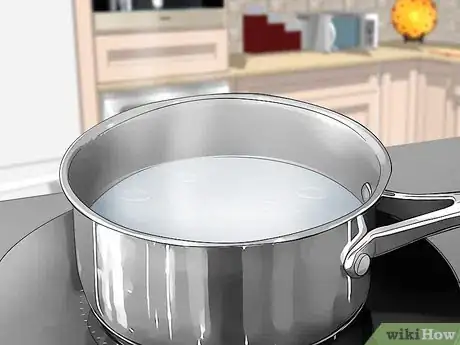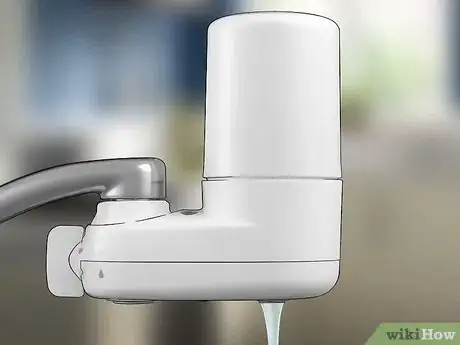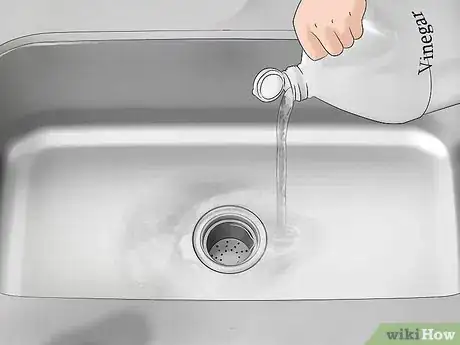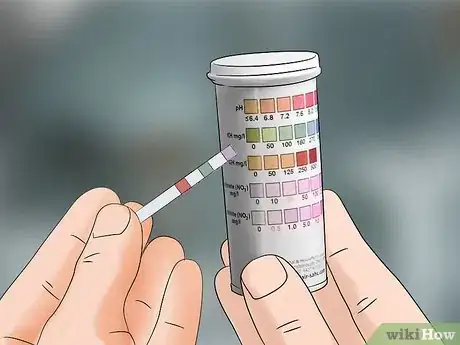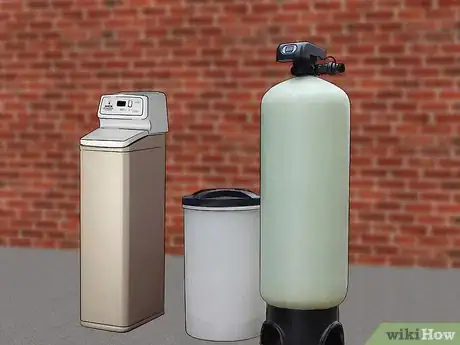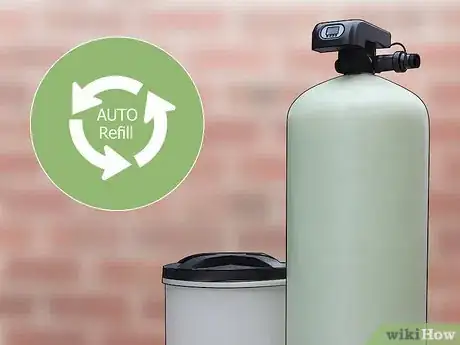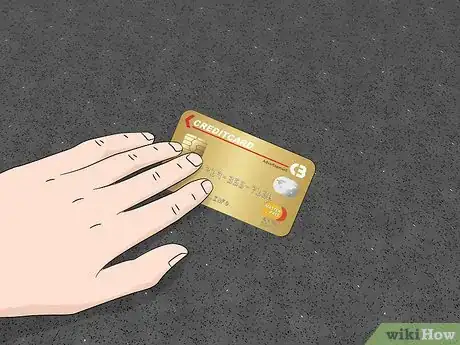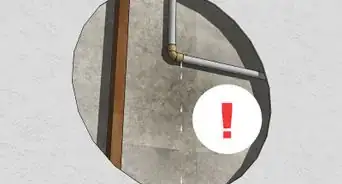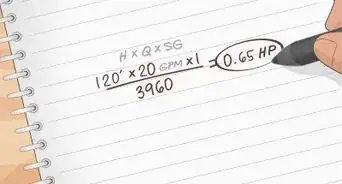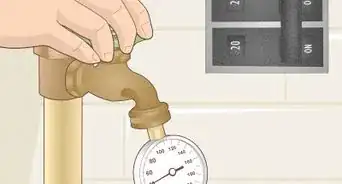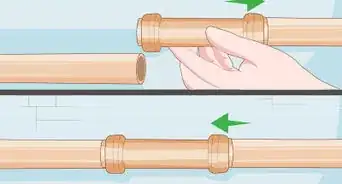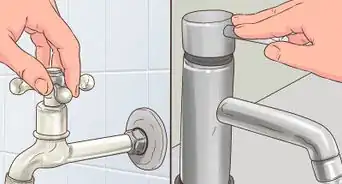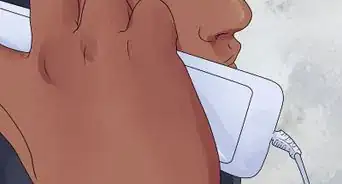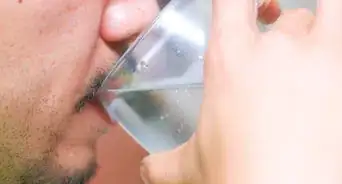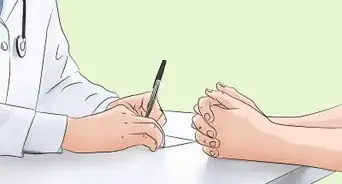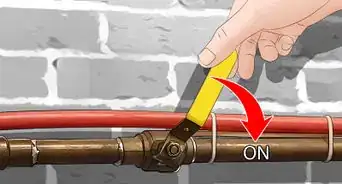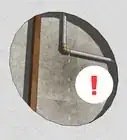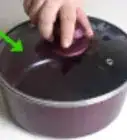This article was co-authored by Andrii Gurskyi. Andrii Gurskyi is the owner and founder of Rainbow Cleaning Service, a New York City cleaning company specializing in apartments, homes, and moving cleanup using non-toxic and artificial fragrance free cleaning solutions. Founded in 2010, Andrii and Rainbow Cleaning Service has served over 35,000 customers.
There are 11 references cited in this article, which can be found at the bottom of the page.
wikiHow marks an article as reader-approved once it receives enough positive feedback. In this case, 88% of readers who voted found the article helpful, earning it our reader-approved status.
This article has been viewed 1,002,072 times.
If you’re tired of clogged drains, spotty glasses, and dried-out hair and skin, softening the water in your home can really help make a big difference. You can soften small amounts of water, like each time you do dishes or laundry, or you can soften your entire household’s water supply so you never have to deal with hard water again. Either way, we’ve got you covered! Below we’ll walk you through exactly what you need to do to soften the water in your home.
Steps
Softening Water for the Kitchen
-
1Boil your water. Boiling water only removes some types of hardness ("temporary hardness"), so it will not work for all homes. Try this once to see if it works for you:[1]
- Bring the water to a boil for a few minutes.
- Let it cool for a couple hours. White minerals should settle to the bottom of the pot.
- Siphon or scoop up the top of the water, leaving the minerals behind.
Tip: Before drinking, remove "flat" flavor by pouring back and forth between two containers. This restores air lost to boiling.
-
2Buy a small ion exchange filter. Some models attach to a kitchen faucet, while others come in pitchers for you to store drinking water. The softened water often has a better taste, but the effect depends on the exact minerals in your water.
Softening Water for Laundry
-
1Add non-precipitating water conditioner to your laundry. These products trap some of the minerals in your water during the wash. Make sure the product is "non-precipitating" — you may need to search online to find out. Avoid "precipitating" conditioner, which leaves scale on fabric and washing machines. Once you've picked a product, add it to laundry as follows:[4]
- Add a second batch of conditioner during the rinse cycle. Without this, all the minerals will just latch back onto your clothes.
Tip: Add it the wash cycle according to label instructions. If you don't know your area's exact water hardness, add conditioner until the water feels slippery and suds appear during the wash.
-
2Treat hard water spots with vinegar. Distilled white vinegar can remove white spots on fabric, drains, or porcelain from mineral buildup. Apply plain or dilute with an equal amount of water, scrub away the problem, then rinse. This temporary solution can get tedious if scale builds up quickly. If your water is only slightly hard it might be a cost-effective approach.
- Towels can also become stiff due to hard water. Treat them the same way.
- Vinegar can bleach some types of fabric and damage stoneware.
- Some people add ½ cup (120mL) vinegar to the rinse cycle in their water, while others claim this can damage the rubber seals on your machine. Consider checking with your machine manufacturer.
Softening Water for the Whole Household
-
1Measure your water hardness. Look online for cheap test strips, or a more accurate water hardness test kit.
-
2Find the right size softener. Most test kits in the United States measure the hardness in "grains per gallon." Multiply this result by the gallons of water your household uses each day, on average (according to your water bill). This is the number of "grains" of hardness the device would soften each day. Choose a softener labeled for about 10 times this number of grains. This means the softener will work for about ten days before it needs some downtime.[5]
- The average US resident uses 100 gallons of water a day (or 70 gallons if you're only softening indoor water use).[6]
- For example, your household water hardness has 9 grains per gallon. You use 300 gallons per day, so 9 x 300 = 2,700 grains per day. A softener in the 27,000 grain range (2,700 x 10) is about the right size.
-
3Choose a type of softener. Ion exchange softeners are by far the most effective home softener. Most other devices are much less effective, or even just scams. Ion exchange softeners come in two types:
- Sodium chloride: the most common and most effective type. This adds a tiny amount of salt (sodium) to your water.
- Potassium chloride: less effective, but useful if you can't have sodium. The potassium can harm people with damaged kidneys or on certain medications that prevent potassium absorption.[7]
- If you don't want sodium or potassium, pick either type and install a reverse osmosis (RO) filter as well to remove them after softening.
-
4Find out how to maintain the softener. Once you've narrowed down the choice to some good models, look at the details. Many softeners refill themselves automatically, going offline for a while during this time. Some do this whenever the softening resin drops too low. Others can be set for a specific time once a week, so you're never caught with hard water unexpectedly.[8]
-
5Check the leasing plan. You can buy the softener in one go or lease it for a monthly payment. Besides reducing the upfront cost, leasing it usually comes with a professional installation, so you don't have to do it yourself. Try to get at least two quotes on the installation and lease.[9]
Tip: When comparing prices, check for a certification seal as well, such as the NSF or WQA marks of approval. This doesn't guarantee top quality, but it separates the proven machines from the scams.
-
6Install the softener. If you decide to install the softener yourself, follow the instructions in the linked article. Most softeners also come with detailed installation instructions, although basic plumbing experience will help.
Community Q&A
-
QuestionHow do you get rid of hard water build up?
 wikiHow Staff EditorThis answer was written by one of our trained team of researchers who validated it for accuracy and comprehensiveness.
wikiHow Staff EditorThis answer was written by one of our trained team of researchers who validated it for accuracy and comprehensiveness.
Staff Answer wikiHow Staff EditorStaff AnswerUsually, vinegar will be all that you need to remove hard water build up. Dilute it in a spray bottle and rub off the build up with a paper towel or cloth. For more difficult stains you can let the vinegar sit on the area for 5-10 minutes before wiping it off.
wikiHow Staff EditorStaff AnswerUsually, vinegar will be all that you need to remove hard water build up. Dilute it in a spray bottle and rub off the build up with a paper towel or cloth. For more difficult stains you can let the vinegar sit on the area for 5-10 minutes before wiping it off. -
QuestionIs it safe to drink hard water?
 wikiHow Staff EditorThis answer was written by one of our trained team of researchers who validated it for accuracy and comprehensiveness.
wikiHow Staff EditorThis answer was written by one of our trained team of researchers who validated it for accuracy and comprehensiveness.
Staff Answer wikiHow Staff EditorStaff AnswerIt's perfectly safe to drink hard water, it just becomes a problem because it can cause build up on faucets or shower heads and cause soap or detergents to work less effectively.
wikiHow Staff EditorStaff AnswerIt's perfectly safe to drink hard water, it just becomes a problem because it can cause build up on faucets or shower heads and cause soap or detergents to work less effectively. -
QuestionWhat is the chemical used to soften hard water?
 wikiHow Staff EditorThis answer was written by one of our trained team of researchers who validated it for accuracy and comprehensiveness.
wikiHow Staff EditorThis answer was written by one of our trained team of researchers who validated it for accuracy and comprehensiveness.
Staff Answer wikiHow Staff EditorStaff AnswerThe chemical will vary depending on the process (and some processes do not use chemicals at all) but it could be lime, salt or lye, among others.
wikiHow Staff EditorStaff AnswerThe chemical will vary depending on the process (and some processes do not use chemicals at all) but it could be lime, salt or lye, among others.
Warnings
- Reverse osmosis (RO) filters will only soften water for a short time before the mineral buildup ruins them. It's best to use an ion exchange filter to soften the water, followed by an RO filter to remove other mineral contaminants.[10] You can find devices that include both of these filters.⧼thumbs_response⧽
- Be skeptical about water softeners that claim to work with methods other then ion exchange. Most of these are pseudoscience scams, including softeners that use magnetism, electric coils, radio pulses, or "catalysts."[11] At best, these will reduce the amount of mineral scale that sticks to appliances — and many won't even do this.[12]⧼thumbs_response⧽
References
- ↑ http://www.bbc.co.uk/schools/gcsebitesize/science/triple_ocr_gateway/chemistry_out_there/hardness_of_water/revision/1/
- ↑ http://www.freedrinkingwater.com/water-education/quality-water-filtration-method.htm
- ↑ http://blogs.discovermagazine.com/d-brief/2014/06/06/the-secret-to-awesome-coffee-is-in-the-water/
- ↑ https://www.michigan.gov/fyit/0,4585,7-240-44293-161031--,00.html
- ↑ http://www.apswater.com/how_to_select_a_water_softener.asp
- ↑ http://www.epa.gov/watersense/pubs/indoor.html
- ↑ http://www.hc-sc.gc.ca/ewh-semt/pubs/water-eau/potassium/index-eng.php
- ↑ http://www.apswater.com/how_to_select_a_water_softener.asp
- ↑ http://www.hometips.com/buying-guides/water-softener-systems.html
About This Article
To soften hard water, start by trying to boil the water and letting it cool before straining out the minerals left behind at the bottom of the pot. If your water is still too hard, try using a small ion exchange filter that you can attach to a kitchen faucet so you have better tasting water. To do laundry with hard water, add a non-precipitating water conditioner into the wash cycle to soften the water and allow the laundry detergent to suds up. For tips on how to soften water for your entire house by installing a water softener, read on!
